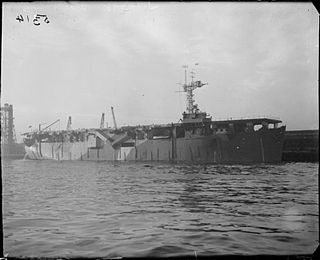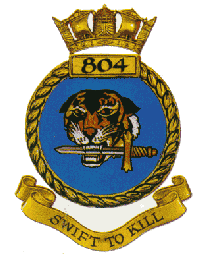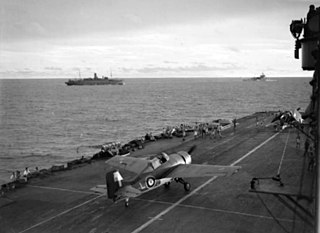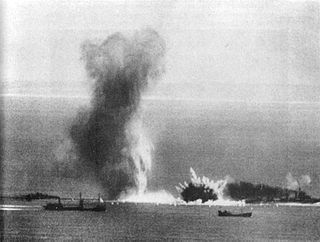The escort carrier or escort aircraft carrier, also called a "jeep carrier" or "baby flattop" in the United States Navy (USN) or "Woolworth Carrier" by the Royal Navy, was a small and slow type of aircraft carrier used by the Royal Navy, the United States Navy, the Imperial Japanese Navy and Imperial Japanese Army Air Force in World War II. They were typically half the length and a third the displacement of larger fleet carriers, being slower, carried fewer planes and were less well armed and armored. Escort carriers were most often built upon a commercial ship hull, so they were cheaper and could be built quickly, which was their principal advantage as they completed in greater numbers as a stop-gap when fleet carriers were scarce. However, the lack of protection made escort carriers particularly vulnerable, and several were sunk with great loss of life. The light carrier was a similar concept to escort carriers in most respects, but were capable of higher speeds to allow operation alongside fleet carriers.

A seaplane tender is a boat or ship that supports the operation of seaplanes. Some of these vessels, the seaplane carriers, could not only carry seaplanes but also provided all the facilities needed for their operation; these ships are regarded by some as the first aircraft carriers and appeared just before the First World War.

A merchant aircraft carrier was a limited-purpose aircraft carrier operated under British and Dutch civilian registry during World War II. MACs were adapted by adding a flight deck to a bulk grain ship or oil tanker enabling it to operate anti-submarine aircraft in support of Allied convoys during the Battle of the Atlantic.

The Siege of Malta in the Second World War was a military campaign in the Mediterranean Theatre. From 1940–42, the fight for the control of the strategically important island of Malta, then a British colony, pitted the air forces and navies of Italy and Germany against the Royal Air Force (RAF) and the Royal Navy.

An aircraft catapult is a device used to launch aircraft from ships, most commonly used on aircraft carriers, as a form of assisted take off. It consists of a track built into the flight deck, below which is a large piston or shuttle that is attached through the track to the nose gear of the aircraft, or in some cases a wire rope, called a catapult bridle, is attached to the aircraft and the catapult shuttle. Different means have been used to propel the catapult, such as weight and derrick, gunpowder, flywheel, air pressure, hydraulic, and steam power. The U.S. Navy is developing the use of Electromagnetic Aircraft Launch Systems with the construction of the Gerald R. Ford-class aircraft carriers. Catapulted aircraft land like conventional aircraft, sometimes with the help of arresting gear.

HMS Biter was a Royal Navy escort carrier during the Second World War. She was laid down as a merchant ship at the Sun Shipbuilding & Drydock Company yard at Chester, Pennsylvania. Laid down on 28 December 1939, she was converted to an escort carrier and commissioned in the Royal Navy on 6 May 1942. She was returned to the United States in 1945 and subsequently lent to France.

HMS Ark Royal was the first ship designed and built as a seaplane carrier. She was purchased by the Royal Navy in 1914 shortly after her keel had been laid and the ship was only in frames; this allowed the ship's design to be modified almost totally to accommodate seaplanes. In the First World War, Ark Royal participated in the Gallipoli Campaign in early 1915, with her aircraft conducting aerial reconnaissance and observation missions. Her aircraft later supported British troops on the Macedonian Front in 1916, before she returned to the Dardanelles to act as a depot ship for all the seaplanes operating in the area. In January 1918, several of her aircraft unsuccessfully attacked the German battlecruiser SMS Goeben when she sortied from the Dardanelles to attack Allied ships in the area. The ship left the area later in the year to support seaplanes conducting anti-submarine patrols over the southern Aegean Sea.

HMS Avenger was a Royal Navy escort aircraft carrier during the Second World War. In 1939 she was laid down as the merchant ship Rio-Hudson at the Sun Shipbuilding & Drydock Company yard in Chester, Pennsylvania. Launched on 27 November 1940, she was converted to an escort carrier and transferred under the lend lease agreement to the Royal Navy. She was commissioned on 2 March 1942.

HMS Nairana was the lead ship of the Royal Navy's Nairana-class escort carriers that saw service in the Second World War. She was built at John Brown & Company shipyards in Clydebank, Scotland. When construction started in 1941 she was intended as a merchant ship, but was completed and launched as an escort carrier, entering service at the end of 1943.

HMS Vindex (D15) was a Nairana-class escort carrier of the Royal Navy that saw service during the Second World War. She was built at Swan Hunter shipyards in Newcastle upon Tyne. When construction started in 1942 she was intended as a merchant ship, but was completed and launched as an escort carrier, entering service at the end of 1943.

The Nairana-class escort carrier was a British-built class of three escort carriers. They were constructed one each in England, Scotland and Northern Ireland to the same basic design during the Second World War for service with the Royal Navy.

804 Naval Air Squadron was a Naval Air Squadron of the Royal Navy, formed in November 1939 from part of 769 NAS Sea Gladiators which had been detached to RNAS Hatston. The squadron was merged into 800 NAS in June 1944 and subsequently reformed in September.

Aircraft carriers are warships that evolved from balloon-carrying wooden vessels into nuclear-powered vessels carrying scores of fixed- and rotary-wing aircraft. Since their introduction they have allowed naval forces to project air power great distances without having to depend on local bases for staging aircraft operations.
Fighter catapult ships also known as Catapult Armed Ships were an attempt by the Royal Navy to provide air cover at sea. Five ships were acquired and commissioned as Naval vessels early in the Second World War and these were used to accompany convoys. The concept was extended to merchant ships which were also equipped with rocket assisted launch systems and known as Catapult Aircraft Merchantmen.
Lieutenant-Commander Brian "Blinkers" Paterson, DFC was a Battle of Britain Fleet Air Arm pilot and one of "The Few".

Kampfgeschwader 40 was a Luftwaffe medium and heavy bomber wing of World War II, and the primary maritime patrol unit of any size within the World War II Luftwaffe. It is best remembered as the unit operating a majority of the four-engine Focke-Wulf Fw 200 Condor maritime patrol bombers. The unit suffered from the poor serviceability and low production rates of the Fw 200 bombers, and from repeated diversion of its long-haul capability aircraft to undertake transport duties in various theatres, especially for the airlift operations to supply encircled forces in the Battle of Stalingrad. Later in the war, KG 40 became one of several Luftwaffe bomber wings to use the Heinkel He 177A heavy bomber.

The Kanalkampf was the German term for air operations by the Luftwaffe against the British Royal Air Force (RAF) over the English Channel in July 1940. The air operations over the channel began the Battle of Britain during the Second World War. By 25 June, the Allies had been defeated in Western Europe and Scandinavia. Britain rejected peace overtures and on 16 July, Adolf Hitler issued Directive 16 to the Wehrmacht, ordering preparations for the invasion of Britain, under the codename Unternehmen Seelöwe.
















